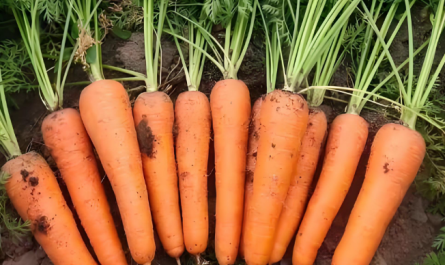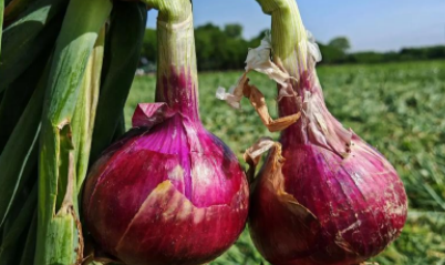Choline chloride can increase the yield of root and tuber crops by more than 30%.
Choline chloride is a widely recognized plant growth regulator, especially suitable for promoting the enlargement of roots and tubers in root and tuber crops such as radishes and potatoes, thereby increasing yield.
The mechanism of action of choline chloride mainly includes promoting photosynthesis, inhibiting respiration, and regulating nutrient transport, allowing more photosynthetic products to accumulate in underground storage organs.

Main Mechanisms of Action of Choline Chloride:
1. Promoting Photosynthesis:
Choline chloride increases the chlorophyll content in leaves, enhancing photosynthetic efficiency and providing more nutrients for the enlargement of underground tubers.
2. Inhibiting Respiration:
It can inhibit crop respiration, reducing ineffective nutrient consumption and allowing more nutrients to be used for the growth of roots and tubers.
3. Regulating Nutrient Transport:
Choline chloride can change the direction of sugar transport, prompting photosynthetic products to be preferentially transported to underground tubers, thereby significantly promoting their enlargement.
Choline chloride application crops and techniques:
Choline chloride has a significant effect on increasing the size and yield of underground root and tuber crops such as potatoes, sweet potatoes, radishes, onions, garlic, peanuts, and yams.
Taking radishes and potatoes as examples, the specific application techniques are as follows:
Radishes: Begin foliar spraying at the 7-9 leaf stage. Use 15-20 ml of 60% choline chloride aqueous solution per acre, diluted in 30 kg of water. Spray once every 10-15 days, for 2-3 consecutive applications.
Potatoes: Apply foliar spraying at the beginning of flowering. Use 15-20 ml of 60% choline chloride aqueous solution per acre, diluted in 30 kg of water. Spray once every 10-15 days, for 2-3 consecutive applications.
Potatoes: Apply foliar spraying at the beginning of flowering. Use 15-20 ml of 60% choline chloride aqueous solution per acre, diluted in 30 kg of water. Spray once every 10-15 days, for 2-3 consecutive applications.

Features and Advantages of Choline Chloride
Choline chloride is a cost-effective plant growth regulator with the following advantages:
High safety: Easily decomposed by soil microorganisms, causing no environmental pollution.
Significant yield increase: When used correctly, it can increase the yield of root and tuber crops by more than 30%.
Multiple functions: In addition to promoting fruit enlargement, it also promotes root growth, increases germination rate, and enhances crop resistance.
The mechanism of action of choline chloride mainly includes promoting photosynthesis, inhibiting respiration, and regulating nutrient transport, allowing more photosynthetic products to accumulate in underground storage organs.

Main Mechanisms of Action of Choline Chloride:
1. Promoting Photosynthesis:
Choline chloride increases the chlorophyll content in leaves, enhancing photosynthetic efficiency and providing more nutrients for the enlargement of underground tubers.
2. Inhibiting Respiration:
It can inhibit crop respiration, reducing ineffective nutrient consumption and allowing more nutrients to be used for the growth of roots and tubers.
3. Regulating Nutrient Transport:
Choline chloride can change the direction of sugar transport, prompting photosynthetic products to be preferentially transported to underground tubers, thereby significantly promoting their enlargement.
Choline chloride application crops and techniques:
Choline chloride has a significant effect on increasing the size and yield of underground root and tuber crops such as potatoes, sweet potatoes, radishes, onions, garlic, peanuts, and yams.
Taking radishes and potatoes as examples, the specific application techniques are as follows:
Radishes: Begin foliar spraying at the 7-9 leaf stage. Use 15-20 ml of 60% choline chloride aqueous solution per acre, diluted in 30 kg of water. Spray once every 10-15 days, for 2-3 consecutive applications.
Potatoes: Apply foliar spraying at the beginning of flowering. Use 15-20 ml of 60% choline chloride aqueous solution per acre, diluted in 30 kg of water. Spray once every 10-15 days, for 2-3 consecutive applications.
Potatoes: Apply foliar spraying at the beginning of flowering. Use 15-20 ml of 60% choline chloride aqueous solution per acre, diluted in 30 kg of water. Spray once every 10-15 days, for 2-3 consecutive applications.

Features and Advantages of Choline Chloride
Choline chloride is a cost-effective plant growth regulator with the following advantages:
High safety: Easily decomposed by soil microorganisms, causing no environmental pollution.
Significant yield increase: When used correctly, it can increase the yield of root and tuber crops by more than 30%.
Multiple functions: In addition to promoting fruit enlargement, it also promotes root growth, increases germination rate, and enhances crop resistance.
RECENT POSTS
-
Choline chloride can increase the yield of root and tuber crops by more than 30%.
-
Effects and Application Methods of 2% Benzylaminopurine + 0.1% Triacontanol Compound in Rice
-
How to Enhance Fertilizer Efficiency Using Plant Growth Regulators?
-
6-Benzylaminopurine 6-BA has a significant preservative effect on fruits and vegetables after harvest
Featured News



